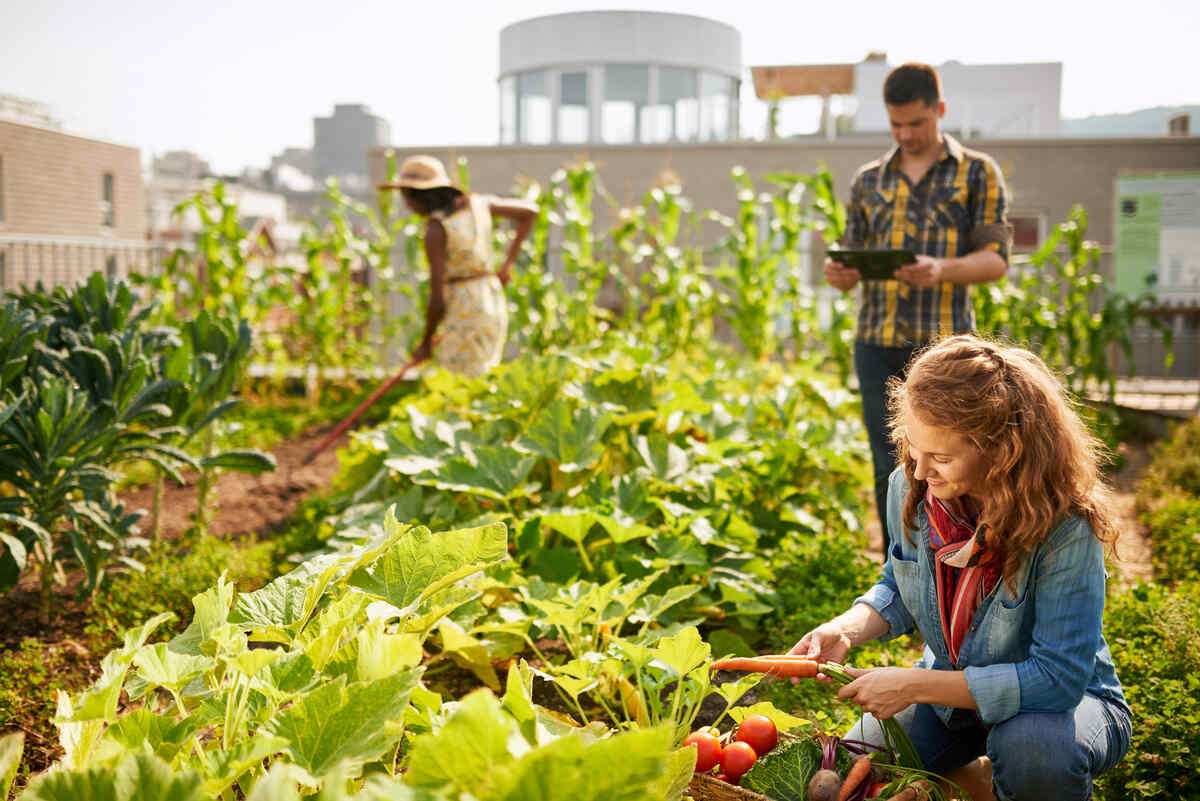City Blooming Fundamentals Explained
City Blooming Fundamentals Explained
Blog Article
Some Known Incorrect Statements About City Blooming
Table of ContentsThe Main Principles Of City Blooming Some Ideas on City Blooming You Need To KnowSome Known Questions About City Blooming.The Only Guide to City BloomingHow City Blooming can Save You Time, Stress, and Money.
Interested in growing food available in the City of Chicago? Assuming about starting a community yard? Modifications to the Chicago Zoning Regulation allow agricultural uses like community yards and city farms in lots of parts of the city. Below is a listing of often asked questions pertaining to the rules and guidelines that farmers must consider when planning a city agriculture project.
The zoning change does not customize any type of various other codes managing composting, structure licenses, buying or renting City had residential property, service licenses or ecological contamination. There are existing codes that manage these problems and they continue to be completely impact and might apply to your job. Area yards are usually had or managed by public entities, public organizations or community-based organizations and preserved by volunteers.
Urban ranches grow food that is intended to be marketed, either on a nonprofit or for-profit basis. As a result of their business objective, urban ranches require a company license. Yes. A neighborhood yard is allowed to sell surplus generate that was expanded on site if the sales are accessory or subordinate to the garden's key purpose defined above.
More About City Blooming
The amount of garden compost material can not surpass 25 cubic backyards at any type of given time according to the requirements in 7-28-715 of the City's Municipal Code. Due to the fact that the dirt at many new garden sites requires amending, garden compost, dirt, timber chips, or other materials can be gotten to build or enhance the expanding room.

If a structure permit is called for then the hoophouse will be considered an accessory structure. You can discover out more concerning the structure permit needs by calling the Department of Structures. The 25,000-square-foot dimension limit is intended to avoid a solitary neighborhood yard from controling an offered block or diminishing the block's existing property or business personality.
The limitation does not apply to gardens situated in Public Open Room (POS) districts. Can there be more than one neighborhood garden that is 25,000 square feet on a solitary block? Yes. The dimension restriction uses to individual gardens, not to private blocks. No. Fencing is not needed, nevertheless, gardens that have huge parking lot may be called for to mount fencing or other landscaping functions.
Rumored Buzz on City Blooming
B1 & B2 areas need that all industrial usage activities be performed inside. Is secure fencing required for metropolitan farms? Fencings may be required, along with landscape design and testing, for specific vehicle parking areas and exterior job or storage space areas depending on area and the specific activity taking place.
Urban farms need structure authorizations and zoning authorizations prior to building (balcony and patio garden design). Various other types of city testimonial might be called for depending on specific structures, tasks, size, landscaping, licensing, public health and stormwater administration problems.
The Department of Business Matters and Consumer Defense can aid identify the certain type of company license that's required. Off road parking is required for most commercial jobs in Chicago. The required number of car parking spaces is based on the number of staff members working on website and not the square footage of the expanding space.
City Blooming Things To Know Before You Buy

A metropolitan ranch can market compost product produced on website, nevertheless, the operation should comply with the regulations in 7-28-715 of the Chicago Municipal Code. Aquaponic systems are permitted indoors on city ranches in pop over to these guys many zoning areas.
Approximately 5 hives or colonies of honey might be maintained as an accessory usage. However, beekeepers need to register with the Illinois Division of Farming. For more information regarding the suggested zoning modification you may get in touch with the Division of Housing and Economic Growth, Bureau of Preparation and Zoning at 312.744.8563.
Farming in cities and metropolitan areas A metropolitan ranch in Chicago. Urban farming refers to different practices of growing. https://yoomark.com/content/home-city-blooming, handling, and distributing food in city locations. The term also puts on the area tasks of animal husbandry, aquaculture, beekeeping, and cultivation in an urban context. Urban agriculture is differentiated from peri-urban agriculture, which occurs in country locations beside suburbs.
The Single Strategy To Use For City Blooming
It can entail a movement of organic cultivators, "foodies" and "locavores", that look for to develop social media networks started on a shared ethos of nature and neighborhood holism. These networks can establish by method of formal institutional support, ending up being incorporated into regional town as a "transition town" activity for lasting urban development.
In either situation, the much more straight access to fresh veggie, fruit, and meat products that might be become aware through city agriculture can improve food safety and security and food safety and security while decreasing food miles, bring about reduced greenhouse gas emissions, therefore adding to climate change reduction. Some of the first evidence of metropolitan agriculture originates from Mesopotamia.
Report this page